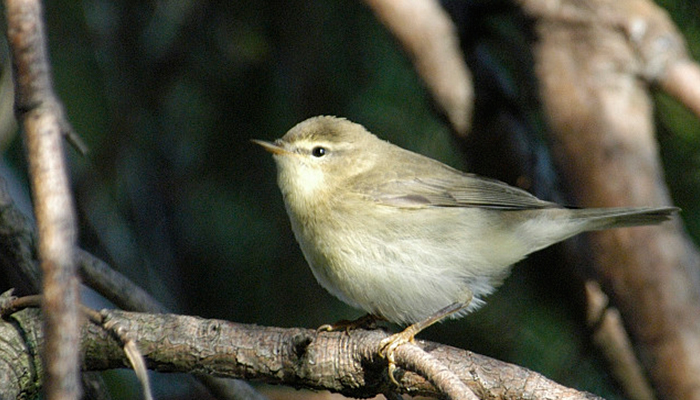
English: Willow
Warbler
Russian: Пеночка-весничка
Mongolian: Ногоон дуучшувуу, Дууч цоровдой
German: Fitis
French: Pouillot fitis
Japanese: キタヤナギムシクイ (Kita-yanagi-mushikui)
Body length: 11-12 ½ cm.
Breeds commonly wherever a few trees or taller
bushes exist, is one of N Europe’s commonest birds, with over 2 million pairs
in Britain & Ireland; found in upland birch and willow zone, in all types
of woodland and in copses and more wooded parks and gardens. Lively and
restless, flits about in canopy in search of insects. Summer visitor (in
Britain & Ireland Apr-Sep), winters in tropical Africa.
Identification: Most
distinctive feature a pale supercilium. Greyish brown-green above (green tone
obvious in W Europe, birds in N Fenno-Scandia often more grey-brown), sometimes
a shade paler and brighter green on rump. Yellowish-white on throat and breast,
whiter on belly. Legs usually brownish-pink (occasionally dark brown-grey!)
Commonest confusion risk is Chiffchaff, but note, in addition to voice:
normally brownish-pink or light brown legs(Chiffchaff’s darker); on average
longer and bolder pale supercilium and darker lores and eye-stripe, giving more
patterned ‘face’; ear-coverts olive-grey but usually rather pale just below eye
(Chiffchaff’s more uniformly dark, so white lower eye-crescent stands out); on
average somewhat stronger bill with more obvious yellow-pink at side/base;
somewhat more elongated shape, not so compact and chubby; longer primary
projection (often c. three-quarters of tertial length; Chiffchaff half to
two-thirds, but often difficult to judge). Juvenile/1st-winter:
More saturated pale yellow below and on supercilium. Sometimes faint buff tinge
to breast-side.